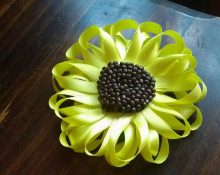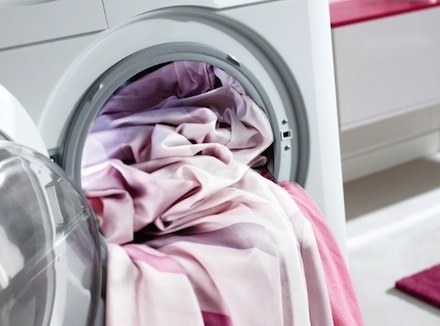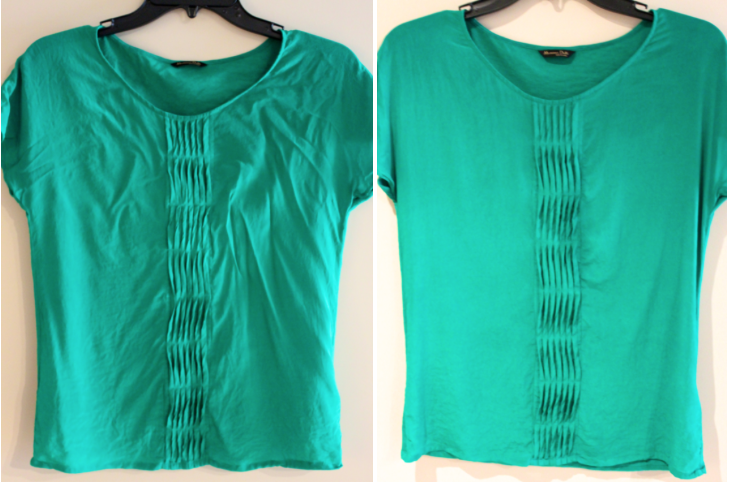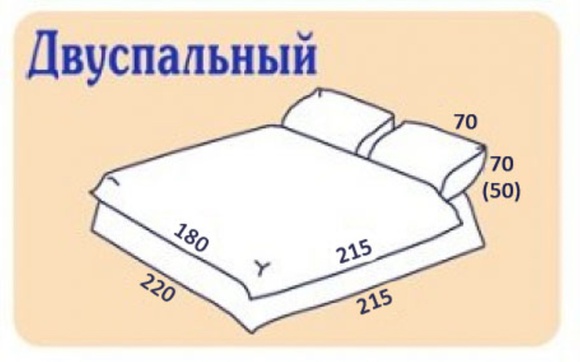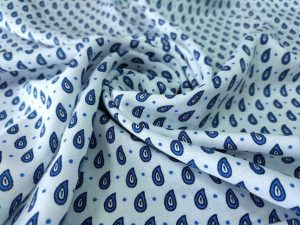
tk.ua
What is staple - this is a special type of fabric obtained as a result of plain weave, and received its name due to the process of its production.
Staple fabric, description
The appearance of matter dates back to the twentieth century. Then German weavers developed a method for using waste from the production of viscose. The material was called the word “stapel”, which translated from German means “bundle of fiber”. A special feature of these bundles is the short length of the fibers, not exceeding 45 cm. They are laid using a special technology. The result is a soft, environmentally friendly and practical fabric.
Germany is the first country to establish industrial production of the staple. The material became more and more improved and became more and more practical.
Due to its aesthetic appearance, excellent quality and low cost, the fabric quickly gained popularity all over the world. The Soviet Union was no exception, where the staple arrived in the 1950s and became the most popular fabric in the USSR.They adjusted production to suit themselves, producing material with the addition of lavsan to the generally accepted composition of cotton and viscose. This made it possible to further reduce the cost of production and add strength to the fabric. Products made from staples could be worn for decades.
What is staple fabric in the modern world
Staple fabric, the composition of which has now changed somewhat, remains very popular. For its production, both natural threads are used - cotton, viscose, and synthetics. These can be a variety of polyester fibers, nylon, polyamide.
Available in several composition options.
Staple, composition:
- The classic version is 50% viscose and 50% cotton.
- 60% viscose + 40% cotton + 10% lavsan.
- Dacron content up to 30% is a stretch staple. The fabric is very elastic and does not wrinkle.
- Viscose 100% is becoming more and more popular. Viscose staple, what kind of fabric? During its production, synthetic fibers are twisted with the main thread of viscose, and are not added as independent threads. Synthetic fibers can be nylon, lavsan, nylon and other threads.
Viscose staple, what kind of fabric is the result?
- As a result, we have a mixed fabric, which will differ slightly in properties depending on the additives in its composition. It is dense and pleasant to the touch. You can wear it in winter and summer and feel comfortable.
- Cotton 100%. The fabric is staple cotton – very soft and pleasant. Comfortable to wear, does not cause allergic reactions, and is perfectly breathable. However, the lack of synthetic fibers makes it wrinkle-resistant and unstretchable.
So, staple fabric, what is it and why does it cost much less than other materials.
Thanks to the possibility of using production waste and substandard raw materials, it becomes possible to produce fairly inexpensive fabric that has a lot of advantages.
Staple - what kind of fabric is it and what are its main advantages:
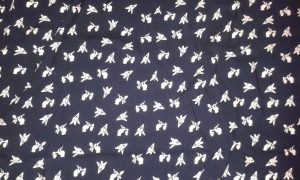
tk.ua
- The staple is very soft and pleasant to the touch.
- Does the staple stretch or not? When adding artificial threads, it becomes elastic.
- Easily painted. It can be plain or printed.
- Resistant to fading, retains color brightness for a long time, does not fade.
- The fabric, although light, is dense and does not show through.
- High wear resistance. Does not form puffs or pellets on the surface.
- The fabric is hypoallergenic, suitable for children's clothing.
- Absorbs moisture well and dries quickly.
- Staple is a “breathable” fabric. Products made from it can be worn in summer and winter.
- Antibacterial.
- Environmentally friendly production of the material.
- Convenient to sew - does not fray, easy to cut.
- Drapes very nicely. Products made from it look great.
- Budget price.
Having considered staple fabric, what kind of material it is and what its advantages are, now let’s look at its disadvantages. There are significantly fewer of them:
- Tendency to shrink after the first wash. To avoid this, it is recommended to simply rinse the fabric before cutting and iron it. Then this definitely won't happen.
- In the absence of synthetic fibers, it wrinkles a lot. If the staple is mixed, this disadvantage can be avoided.
- When wet it becomes less durable.
What staple fabric looks like and what its texture is can be clearly seen in the photographs below.
Staple material, what it is - we have already found out. Now let's look at the universal rules for caring for it.
Having studied the staple material, that it is a rather delicate and soft fabric, it is clear that caring for it must be careful:
- Hand washing or washing in a washing machine on a “delicate” cycle is allowed, at temperatures up to 40° with mild detergents for natural fabrics.
- When hand washing, do not twist or rub the product too much.
- Machine spinning is contraindicated.
- To remove stains from fabric, you need to wash them in a soapy solution.
- Do not soak - this can destroy the structure of the material, the paint will transfer to lighter areas. Moreover, this can happen at any water temperature.
- Dry in a ventilated area.
Having seen what the staple looks like, let’s consider the rules for ironing it:
Staple products are ironed exclusively from the inside out and through an additional dry layer of fabric. No steaming. Iron temperature – up to 110°C.
If you follow these recommendations and take into account the manufacturer's recommendations for caring for the item, your products will look great for many years.
What is sewn from staples?
This is a universal material that combines the advantages of natural and synthetic materials. Ideal for summer outfits. A variety of items for women's, men's and children's wardrobes are made from it. Staple clothing is very light, inexpensive, beautiful and practical. The material is also used as home textiles. This could include curtains, bedding, as well as aprons and table napkins.
In addition, staple fibers are used in the automotive industry, in the production of geotextiles, roofing materials, and in the medical industry.
The staple, photos of which are presented in the article, is still a very popular material to this day.Thanks to its huge number of positive qualities and a small number of disadvantages, as well as its low cost, it has become the basis for sewing both casual and elegant clothes.


 0
0